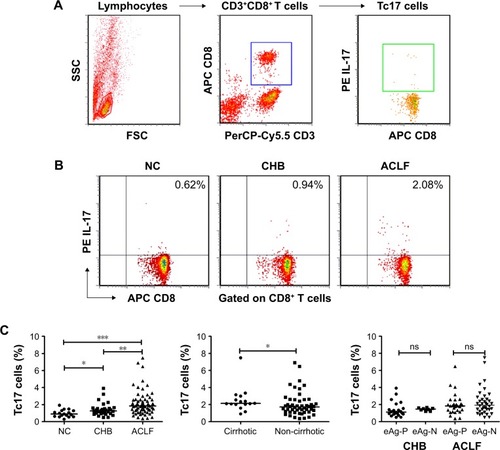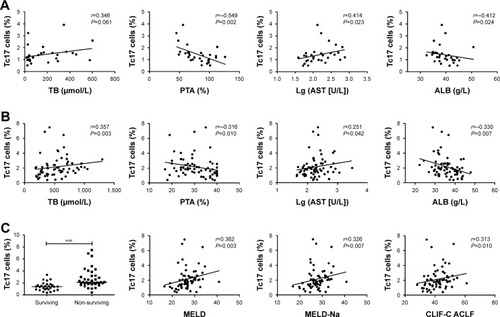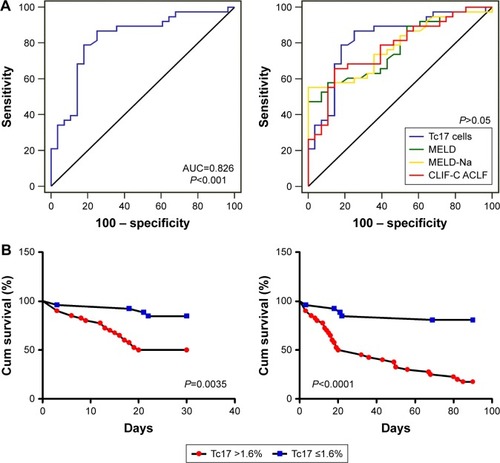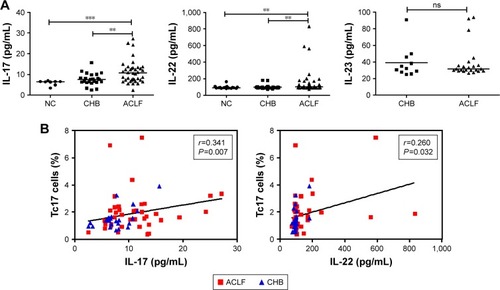Figures & data
Table 1 Characteristics of participants enrolled in the study
Figure 1 Tc17 cell frequency was significantly higher in patients with HBV-ACLF.
Abbreviations: ACLF, acute-on-chronic liver failure; CHB, chronic hepatitis B; eAg-P, HBeAg-positive; FSC, forward scatter; eAg-N, HBeAg-negative; HBV, hepatitis B virus; ns, not significant; NC, normal control; SSC, side scatter; Tc17, IL-17-producing CD8+ T.

Figure 2 Tc17 cells may play a proinflammatory role in the pathogenesis of HBV-ACLF.
Abbreviations: ACLF, acute-on-chronic liver failure; AST, aspartate aminotransferase; ALB, albumin; CHB, chronic hepatitis B; CLIF-C, chronic liver failure consortium; HBV, hepatitis B virus; MELD, model for end-stage liver disease; PTA, prothrombin time activity; TB, total bilirubin; Tc17, IL-17-producing CD8+ T.

Figure 3 Increased Tc17 cell frequency at admission indicated poor prognosis in HBV-ACLF.
Abbreviations: AUC, area under curve; ACLF, acute-on-chronic liver failure; AUROC, area under the ROC curve; CLIF-C, chronic liver failure consortium; Cum, cumulative; HBV, hepatitis B virus; MELD, model for end-stage liver disease; ROC curve, receiver operating characteristic curve; Tc17, IL-17-producing CD8+ T.

Table 2 Characteristics of patients with HBV-ACLF according to clinical outcome
Table 3 Factors associated with mortality in patients with HBV-ACLF by using the Cox regression analysis
Figure 4 Tc17 cell frequency was positively correlated with serum IL-17A and IL-22 levels.
Abbreviations: ACLF, acute-on-chronic liver failure; CHB, chronic hepatitis B; HBV, hepatitis B virus; NC, normal control; ns, not significant; Tc17, IL-17-producing CD8+ T.

